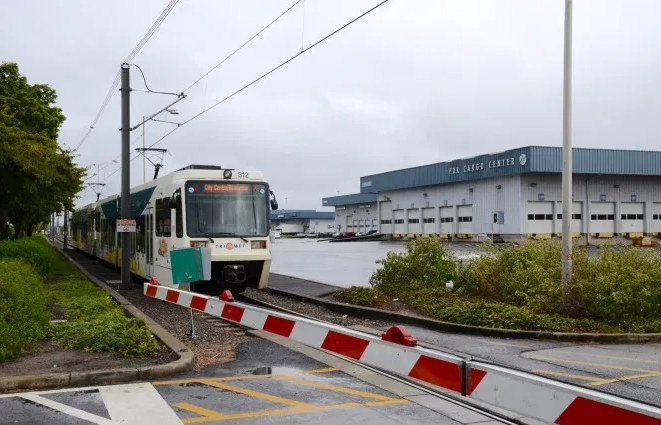Note: GJEL Accident Attorneys regularly sponsors coverage on Streetsblog San Francisco and Streetsblog California. Unless noted in the story, GJEL Accident Attorneys is not consulted for the content or editorial direction of the sponsored content.
Muni is planning to stave off post-lockdown gridlock by creating emergency bus-only lanes and consolidating lines to improve speed, capacity, and reliability. The agency is also rejiggering rail lines to improve reliability and move more people, more efficiently, under constrained budgets.
But if this is all being done as a desperate, gridlock-averting emergency, why is nobody yet talking about signal preemption for trains, something other transit agencies have long taken for granted?
In the lead image, a Portland light rail vehicle (LRV) approaches an intersection. But unlike in San Francisco, that train will not stop. Instead, bells ring, lights flash, and gates come down, stopping all cross traffic so the train can continue through, "preempting" cross traffic. One can see the same thing in San Diego, where on most of the LRV lines trains trigger crossing gates and trains speed through intersections, unencumbered by cross traffic.
"Muni's lack of any signal preemption or crossing gates for its light rail network is a big impediment to speed and on-time performance for trains. When you look at light rail across the US and around the world, locations like St. Francis Circle, by the Stonestown Galleria, the T Third, and along the N and L lines in the Sunset should be signalized with traffic lights, preemption, and crossing gates as appropriate," wrote Dennis Lytton, a Bay Area rail expert with decades of experience managing and operating train systems.
The most egregious examples of the way trains are delayed and slowed by this lack of preemption in San Francisco is at the aforementioned Stonestown Galleria, where M Ocean View trains wait several minutes for cross traffic, including left-turning cars, to enter a mall.
"The fixes are relatively easy engineering-wise," added Carter, who also wants to see minor intersections on 3rd Street closed and crossing gates added at major intersections for the T line, not to mention cars banned from the train right of way for much of the route. "It would make a huge difference for riders."
Cheryl Brinkman, a ten-year veteran of the SFMTA board, said crossing gates never come up in conversations with staff. However, she agreed that the M Ocean View line, where it has its own right-of-way from Sloat to Junipero Serra, is probably the most sensible place to install them. The cost would be quickly recouped by the money saved by having better, more reliable run times. "When transit isn't stuck in traffic, it saves money," said Carter. "Service hours cost millions of dollars."
"I know it's something I would support," said Brinkman.






